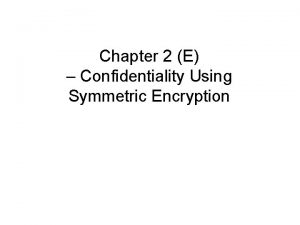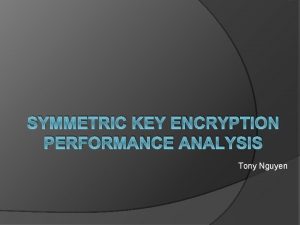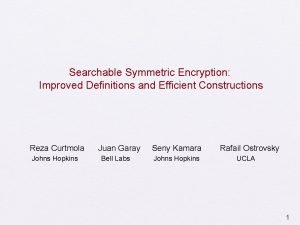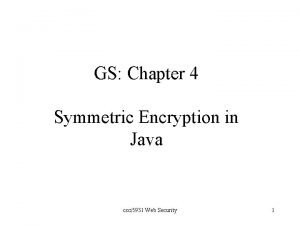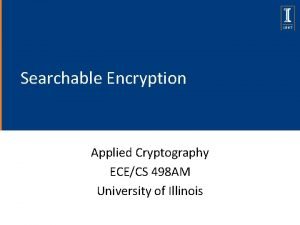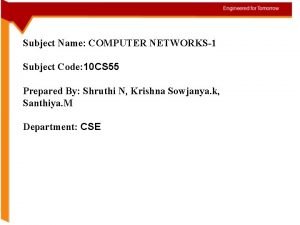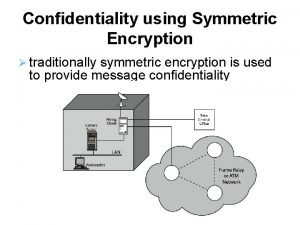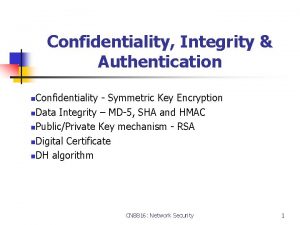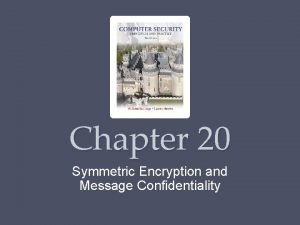Confidentiality using Symmetric Encryption traditionally symmetric encryption is










- Slides: 10

Confidentiality using Symmetric Encryption • traditionally symmetric encryption is used to provide message confidentiality • consider typical scenario – workstations on LANs access other workstations & servers on LAN – LANs interconnected using switches/routers – with external lines or radio/satellite links • consider attacks and placement in this scenario – – snooping from another workstation use dial-in to LAN or server to snoop use external router link to enter & snoop monitor and/or modify traffic one external links

Confidentiality using Symmetric Encryption • have two major placement alternatives • link encryption – encryption occurs independently on every link – implies must decrypt traffic between links – requires many devices, but paired keys • end-to-end encryption – encryption occurs between original source and final destination – need devices at each end with shared keys

Traffic Analysis • when using end-to-end encryption must leave headers in clear – so network can correctly route information • hence although contents protected, traffic pattern flows are not • ideally want both at once – end-to-end protects data contents over entire path and provides authentication – link protects traffic flows from monitoring

Placement of Encryption • can place encryption function at various layers in OSI Reference Model – link encryption occurs at layers 1 or 2 – end-to-end can occur at layers 3, 4, 6, 7 – as move higher less information is encrypted but it is more secure though more complex with more entities and keys

Traffic Analysis • is monitoring of communications flows between parties – useful both in military & commercial spheres – can also be used to create a covert channel • link encryption obscures header details – but overall traffic volumes in networks and at end-points is still visible • traffic padding can further obscure flows – but at cost of continuous traffic

Key Distribution • symmetric schemes require both parties to share a common secret key • issue is how to securely distribute this key • often secure system failure due to a break in the key distribution scheme

Key Distribution • given parties A and B have various key distribution alternatives: 1. A can select key and physically deliver to B 2. third party can select & deliver key to A & B 3. if A & B have communicated previously can use previous key to encrypt a new key 4. if A & B have secure communications with a third party C, C can relay key between A & B

Key Distribution Scenario

Key Distribution Issues • hierarchies of KDC’s required for large networks, but must trust each other • session key lifetimes should be limited for greater security • use of automatic key distribution on behalf of users, but must trust system • use of decentralized key distribution • controlling purposes keys are used for

 Confidentiality with symmetric encryption
Confidentiality with symmetric encryption Key distribution
Key distribution Conventional encryption and message confidentiality
Conventional encryption and message confidentiality Rsa vs aes performance
Rsa vs aes performance Symmetric encryption advantages
Symmetric encryption advantages Searchable symmetric encryption
Searchable symmetric encryption Symmetric encryption java
Symmetric encryption java Searchable symmetric encryption
Searchable symmetric encryption What is symmetric matrix
What is symmetric matrix light cured gel polish may be used on:
light cured gel polish may be used on: Traditionally internet checksum is
Traditionally internet checksum is
